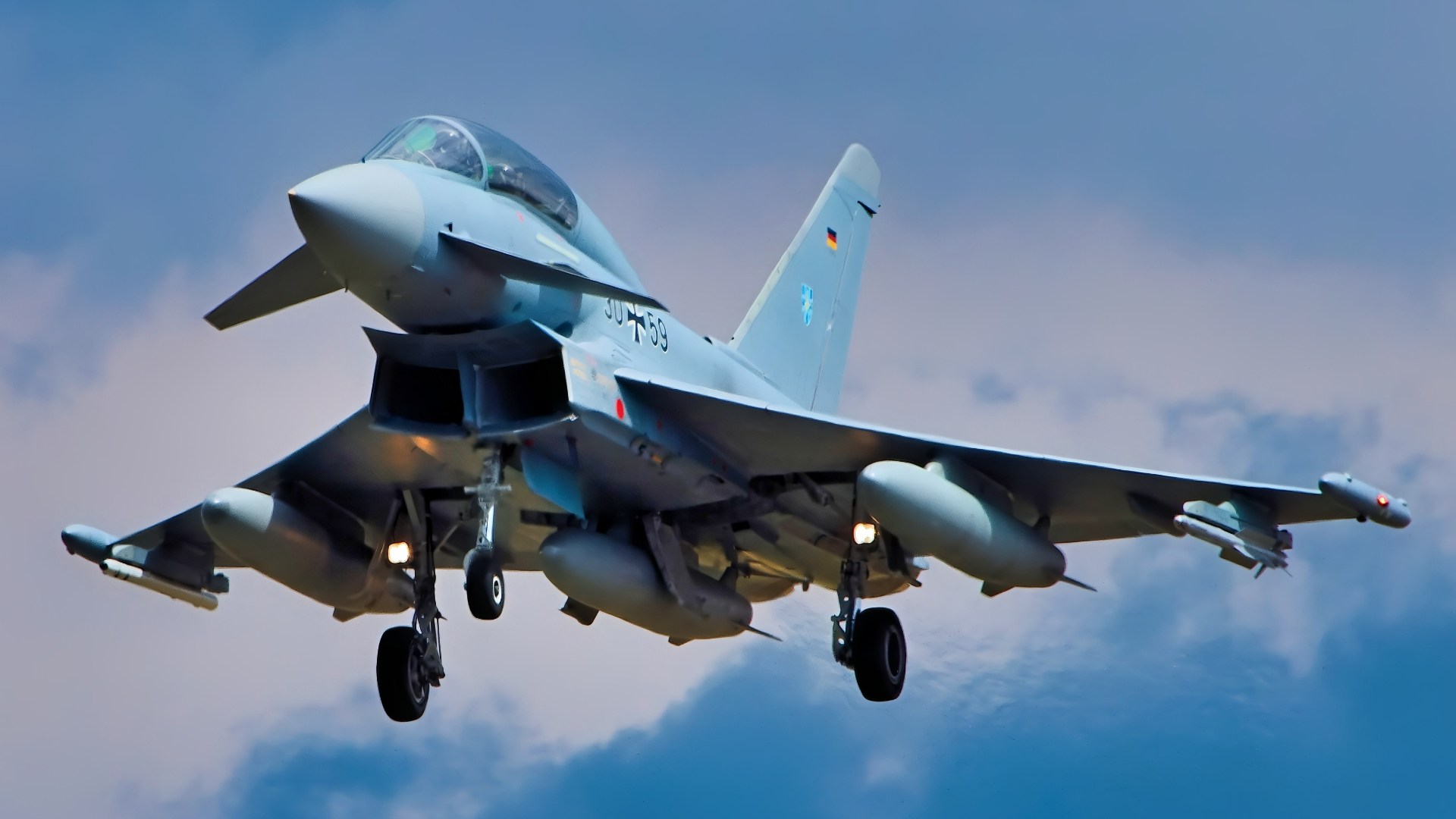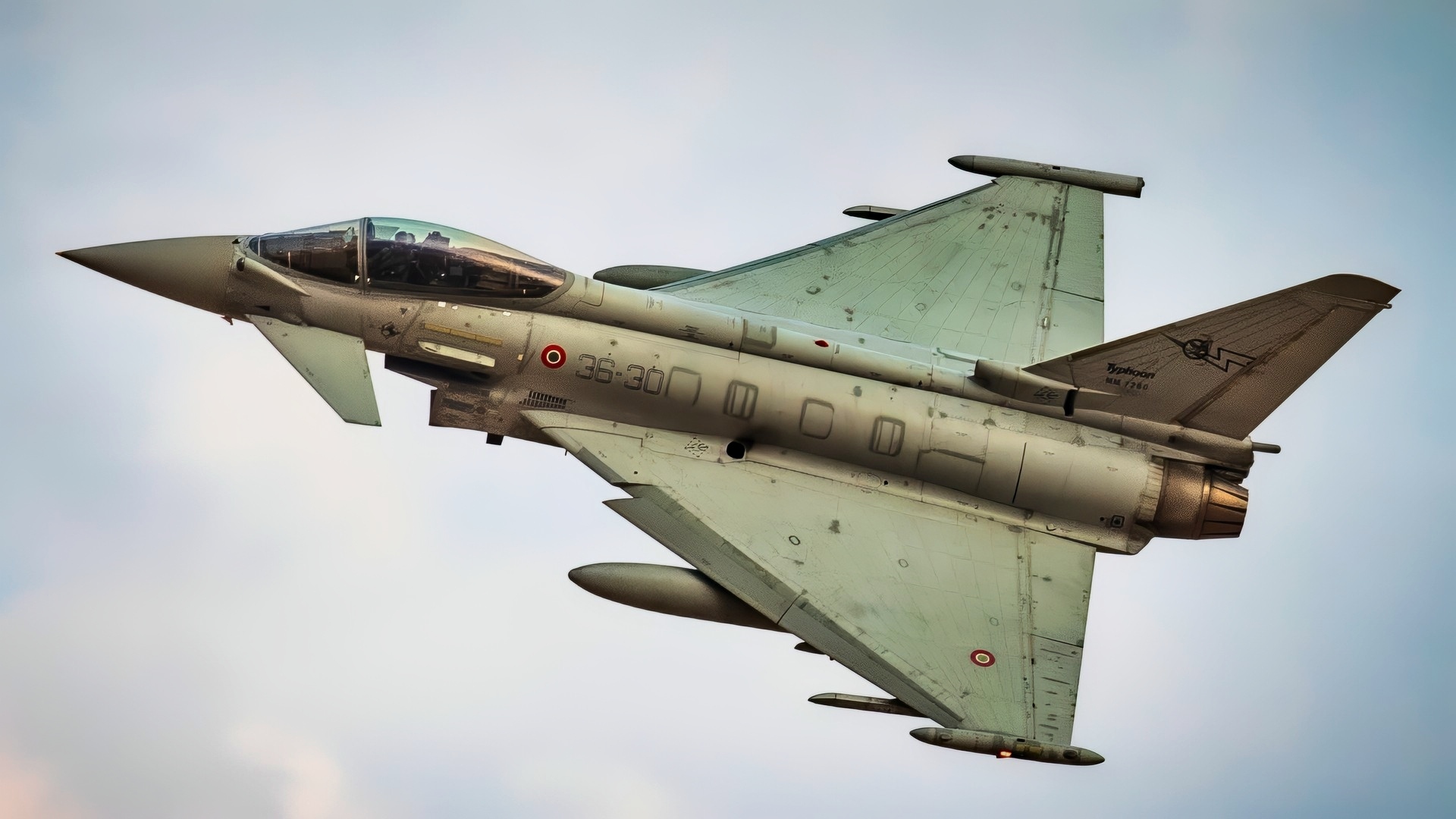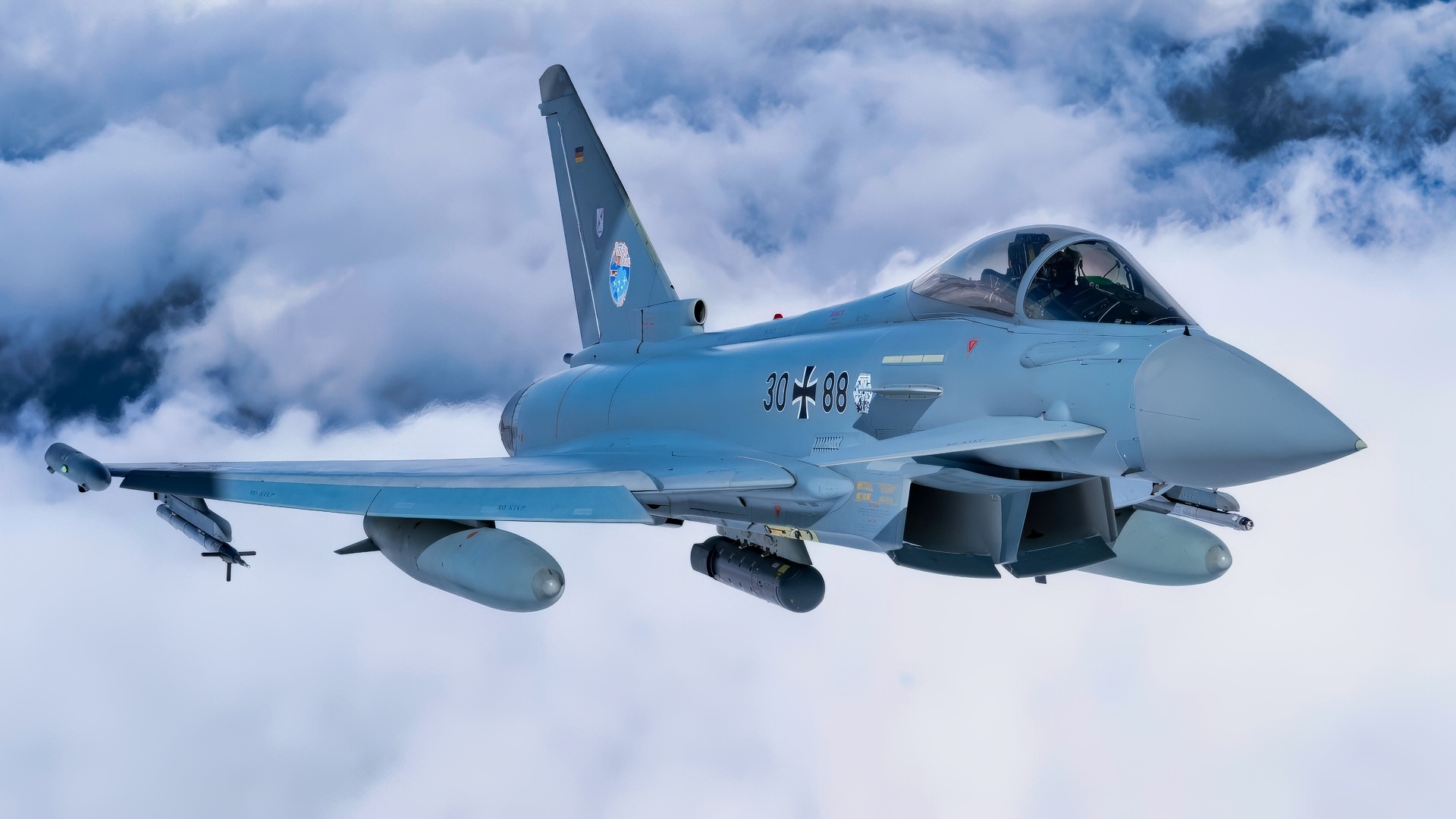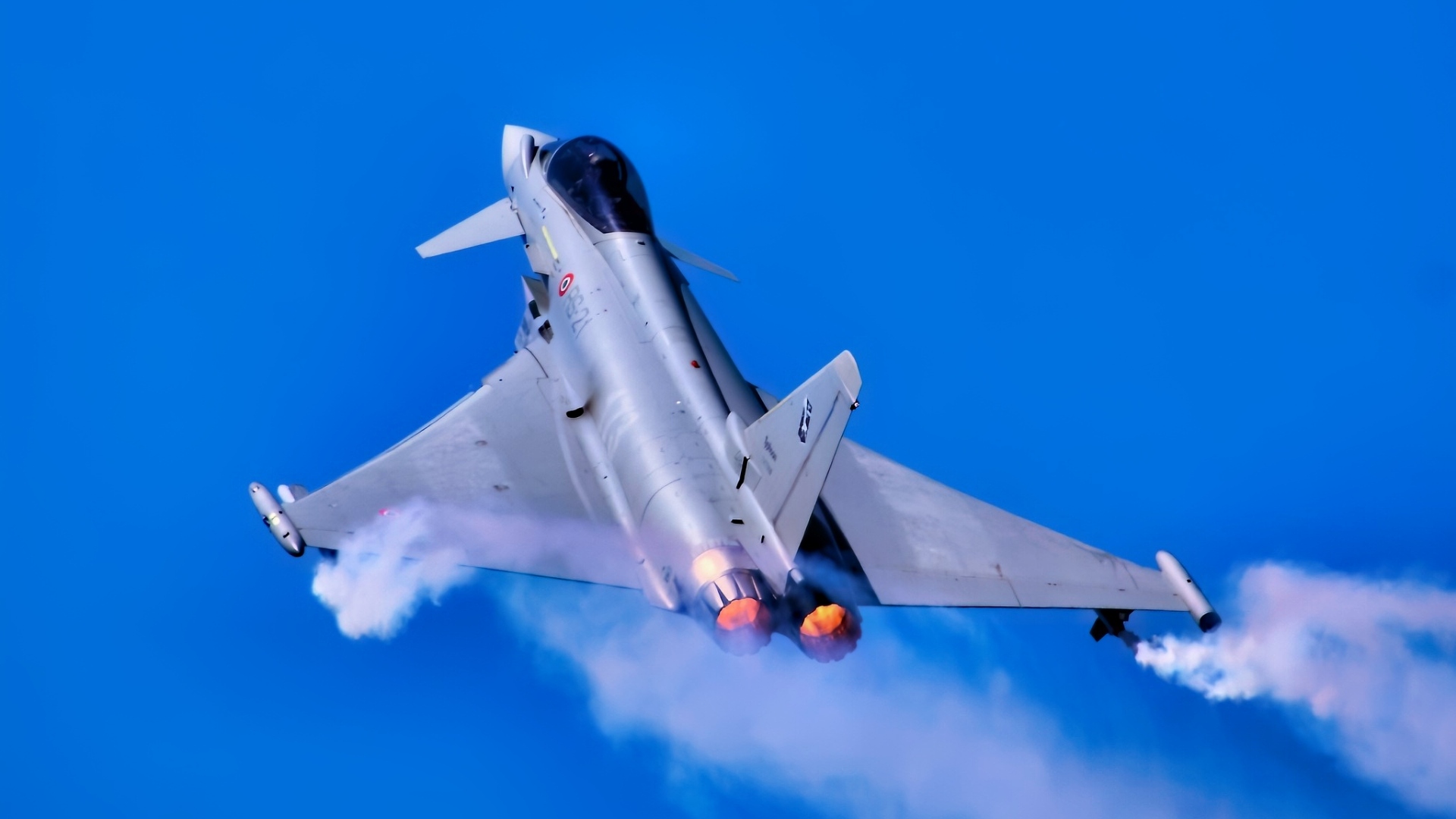Key Points and Summary – Europe’s Eurofighter Typhoon remains a high-performance classic with serious punch—Storm Shadow for deep strike, Brimstone II for precision armor kills, and the Meteor missile to stretch “no-escape” range.
But in a world of dense, networked SAMs, its biggest liability is glaring: no true stealth.

A German Air Force Eurofighter Typhoon flies over Alaska during exercise Arctic Defender 24 at Joint Base Elmendorf-Richardson, Alaska, July 8, 2024. Arctic Defender is a German Air Force-led exercise that provides a unique opportunity to integrate various forces into joint, coalition and multilateral training from simulated forward operating bases and is part of several exercises under Pacific Skies 24. Pacific Skies is a combination of several exercises in the Indo-Pacific theater in which German, French and Spanish air forces participate with U.S. forces. (U.S. Air Force photo Senior Airman Shelimar Rivera Rosado)

2017 Eurofighter Typhoon. Image Credit: Creative Commons.
External hardpoints, sharp intakes, and exposed edges boost radar returns, letting modern systems classify and cue fires at distance.
While Typhoon upgrades add sensors and weapons, survivability against top-tier IADS still favors low-observable designs like the F-35.
Bottom line: the Typhoon hits hard—but without stealth, it must fight from standoff or under someone else’s stealth umbrella.
Eurofighter Typhoon: Deadly Weapons, Fatal Stealth Gap
Europe’s highly regarded Eurofighter Typhoon fighter jet is a classic, and it has been upgraded in recent years with a new generation of long-range precision weaponry.
The upgrades are not enough to meet the realities of high-end modern aerial warfare, however: the aircraft lacks the stealth needed to evade the newest air defenses.
Not Stealthy Enough
With its external hardpoints and some sharp edges, the fuselage of the Typhoon is not blended in a stealthy way—indeed, there are as many as 13 of these hardpoints. The front of the fuselage appears to include an angled incline—nothing like the kind of smooth exterior necessary to minimize a radar return.
In recent years, the Eurofighter has been armed with a high-tech weapon called Storm Shadow; a stealthy cruise missile that was used during Operation Iraqi Freedom to destroy Iraqi bunkers in 2003. The weapon offers the possibility of controlled detonation. Its main warhead has a variable delay fuse and a specially engineered double-charge explosive effect.
Storm Shadow Strike
This gives the missile an exceptional penetrating ability, and thanks to precision engineering, Eurofighters can fire two cruise missiles through the same opening.
In 2014, at the Farnborough air show, former UK Royal Air Force pilot Paul Smith told me that the aircraft uses multi-mode GPS and an inertial navigation precision-guidance system called “terrain reference technology.”
The jet carries cruise missiles and weapons beneath its wings and within an internal weapons bay.
Despite its power and precision, the lack of stealth is a glaring problem for this fighter jet.
The engine inlets, wings, and hardpoints have too many protrusions and sharp angles, contours that enable enemy radar to bounce electromagnetic pings and deliver a clear return image.
With more precise electromagnetic returns, air defense systems are much better positioned to acquire an aircraft’s shape, size, speed, and configuration. A stealthy blended wing-body configuration and a smoother, less-angled fuselage make it very difficult for enemy radar to acquire a clear, accurate signal.
The Advantage of Stealth
The U.S. B-2 bomber, for instance, gives such a small return that it appears as a bird to enemy radar, in large measure thanks to the absence of protruding external structures.
And while it does not have the completely blended wing-body of a B-2 bomber, the F-35 also operates with a stealthier configuration than the Typhoon—although the Lightning II does have tails and protruding wings. Further, it can operate in “beast mode,” loaded up with external weapons, further reducing its stealth.

An Italian Air Force Eurofighter Typhoon maneuvers during a joint close air support exercise with U.S. Marines attached to the Special Purpose Marine Air-Ground Task Force – Crisis Response – Central Command (SPMAGTF-CR-CC) 19.2, and service members with the Italian Air Force in Kuwait, Oct. 14, 2019. The SPMAGTF-CR-CC works with partner nations on maintaining regional security. (U.S. Marine Corps photo by Sgt. Kyle C. Talbot)

A German Air Force Eurofighter Typhoon flies over Alaska during exercise Arctic Defender 24 at Joint Base Elmendorf-Richardson, Alaska, July 8, 2024. Arctic Defender is a German Air Force-led exercise that provides a unique opportunity to integrate various forces into joint, coalition and multilateral training from simulated forward operating bases and is part of several exercises under Pacific Skies 24. Pacific Skies is a combination of several exercises in the Indo-Pacific theater in which German, French and Spanish air forces participate with U.S. forces. (U.S. Air Force photo Senior Airman Shelimar Rivera Rosado)
Overall, however, the exterior of the F-35 is smooth and blended, with special bolts, seams, and radar-absorbing composite materials.
The Typhoon is long-established and has evolved. It is known for its high-performing thrust-to-weight ratio, lightweight carbon-fiber composite materials and “swing-roll” capability.
With its 13 hardpoints, the Typhoon can attack with GPS- and laser-guided bombs, including the Paveway IV, a 500-pound laser-guided bomb.
Brimstone II
Typhoon enhancements have also included the addition of Brimstone II, a short-range stand-off missile.
This precision-guided weapon also saw service on the British Tornado aircraft.
Designed initially as a tank-killer, the Brimstone II is engineered with an all-weather, highly precise millimeter-wave seeker. A Brimstone was once used to destroy an al-Qaeda militant on a motorcycle traveling at 60 kilometers per hour.
The Eurofighter was also famously paired with the Meteor, a missile that significantly increases what pilots refer to as the “no-escape range”—the distance or point at which an air-to-air adversary cannot fly away from an approaching missile.
About the Author: Kris Osborn
Kris Osborn is the President of Warrior Maven – Center for Military Modernization. Osborn previously served at the Pentagon as a highly qualified expert in the Office of the Assistant Secretary of the Army—Acquisition, Logistics & Technology. Osborn has also worked as an anchor and on-air military specialist at national TV networks. He has appeared as a guest military expert on Fox News, MSNBC, The Military Channel, and The History Channel. He also has a Masters Degree in Comparative Literature from Columbia University.
More Military
The M113: America’s “Forgotten” APC That Just Won’t Quit
How British Aircraft Carriers Keep Sinking in War Games
Boeing F-47 NGAD Fighter: One Missing Fact Could Decide Its Fate
Canada Knows How to Sink U.S. Navy Nuclear Aircraft Carriers










